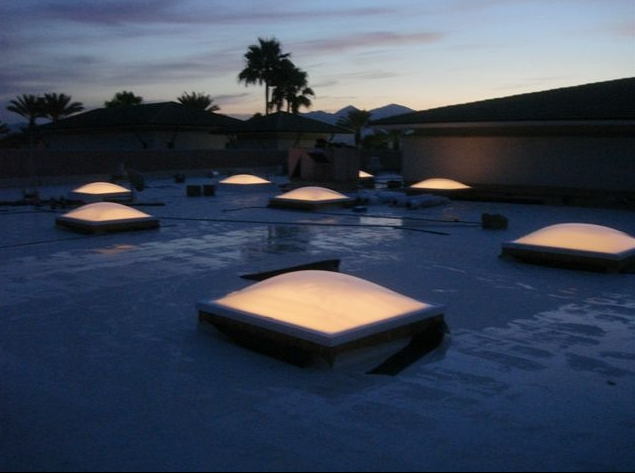The Physics of Skylights
Challenges of Skylights
Despite how wonderful they are, and
the obvious benefits to having them, skylights do have their
drawbacks.
For one, and most notable, a lot of heat tends to get lost
through skylights. Some skylights are poorly designed or
poorly installed, so that heat leaks through the frame of
the window and/or wind and even sometimes rain can come in.
But even for skylights that are installed well, the sad
truth is that windows (no matter where they are in a
building) just aren't as well insulated as wall material;
and since heat tries to reach an equilibrium and goes
through the path of least resistance, it tends to escape
rising up through the skylights.
 Less thought of is the fact that these marvelous portals,
allowing so much light inside in the daytime, become vacuums
that suck the inside light out at night.
Less thought of is the fact that these marvelous portals,
allowing so much light inside in the daytime, become vacuums
that suck the inside light out at night.